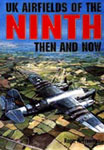Description
The distance to the Spitfire diminished to 100 metres – by which time the wings of the Spitfire covered the circle in his gunsight – and Ostermann was still holding his fire. In the next second, the Spitfire opened fire and the Bf 109 in front dived away. This was the moment Ostermann had been waiting for. He pressed both firing buttons and immediately scored a series of direct hits. The Spitfire burst into flames and descended vertically, leaving a grey plume of smoke. A moment later a sudden white eruption of spray in the sea below indicated the point where the Spitfire went in…
From a young, inexperienced, novice pilot who struggled to master the twin-engined Messerschmitt Bf 110 Zerstörer in early 1940 to a fearsome exponent of the Bf 109 over the English Channel, Yugoslavia and the Russian Front, Max-Hellmuth Ostermann’s war ended in August 1942 with 102 confirmed aerial victories to his credit – the majority of them against the Soviet Air Force.
When Strebenk saw the German four-aircraft Schwarm disperse and the enemy pilots came breaking into him, he banked to the left to evade the attack. But that did not help him against a skilful pilot like Max-Hellmuth Ostermann. The German pilot opened the throttle wide and was soon in position, 180 metres behind Strebenk’s Bf 109. When Karlo Strebenk tried to evade through a descending left turn, Ostermann’s cannon shells ripped through the fuselage and wings of his Bf 109 in a perfect deflection shot. The Yugoslavian Messerschmitt turned over and fell vertically toward the earth until it exploded in a field below. Karl Strebenk had no chance of surviving.
While to date, the diminutive Ostermann has not been regarded by English language historians as one of the most renowned of the Luftwaffe Experten, he was nevertheless decorated with the Knight’s Cross with Oakleaves and Swords – the tenth officer in the German armed forces to receive the award – for his ‘repeatedly proven heroism’. Ostermann frequently scored two victories in one day and his final operations saw him in command of a Staffel of JG 54, the famous Grünherz-Geschwader.
A glance at the ammunition counter in front of him told him that he still had enough ammunition left, so he kicked hard on the rudder and dived down. He singled out one DB-3 and hung on to it as it raced, just meters above the treetops of a forest. This was dangerous flying. The Bf 109 bucked and bounced in the slipstream from the bomber’s twin engines, and Ostermann had to hold the stick hard so that his fighter was not pushed into the treetops which flashed past underneath. When he gave the first burst of fire, the air currents caused him to miss. He pushed the throttle handle forward, turned out of the slipstream and attacked obliquely from astern instead. Flashes indicated hits on the starboard engine and fuselage of the bomber. The engine emitted a trail of smoke which rapidly grew thick and black..
Soft cover, 8.3″ x 11.7″, 64 pages, 50 rare b+w photographs, 13 beautiful colour artwork profiles.





